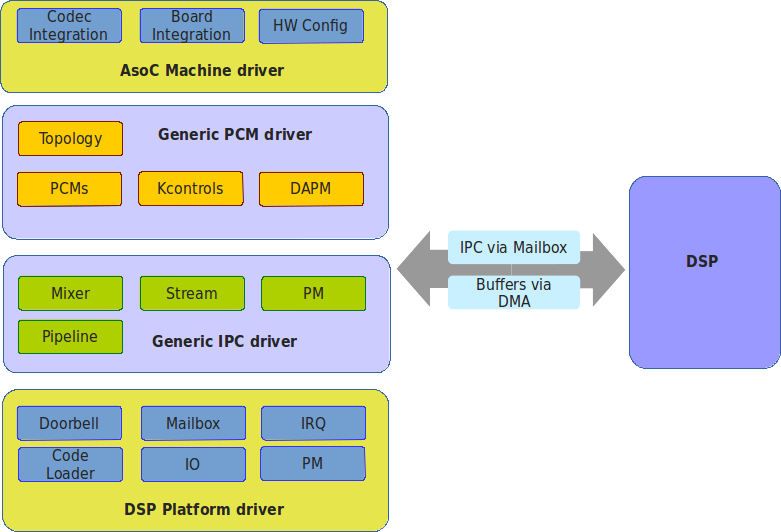The ASoC driver architecture for Sound Open Firmware is shown in the diagram below. The driver architecture is also split into four layers, like a protocol stack, each with a different purpose.
- Machine driver. The ASoC machine driver does all the machine/board audio hardware integration. It also glues the platform driver and drivers for any codec(s) together so they appear as a single ALSA sound card. Sound Open Firmware can reuse existing upstream machine drivers (as only the platform name need changed) or can have bespoke machine drivers.
- Generic PCM Driver. The PCM driver creates ALSA PCMs, DAPM and kcontrols based on the topology data loaded at run time. The PCM driver also allocates buffers for DMA and registers with run time PM. It is architecture and platform generic code.
- Generic IPC driver. The IPC driver is the messaging bridge between the host and DSP and defines the messaging ABI and protocol. It is architecture and platform generic code.
- DSP Platform Driver. The platform driver is a platform specific driver that abstracts the low level platform DSP hardware into a common generic API that is used by the upper layers. This includes code that will initialise the DSP and boot the firmware.

The right hand side of the diagram shows the mailbox/doorbell mechanism and the DSP.
It’s intended that the PCM and IPC drivers will be reused without modification on every platform. The platform differentiation will occur via the topology data and firmware. There is also scope for differentiation via the machine driver and platform driver. i.e. ACPI or Device Tree could be used to specify HW configuration.

